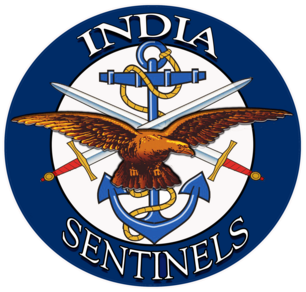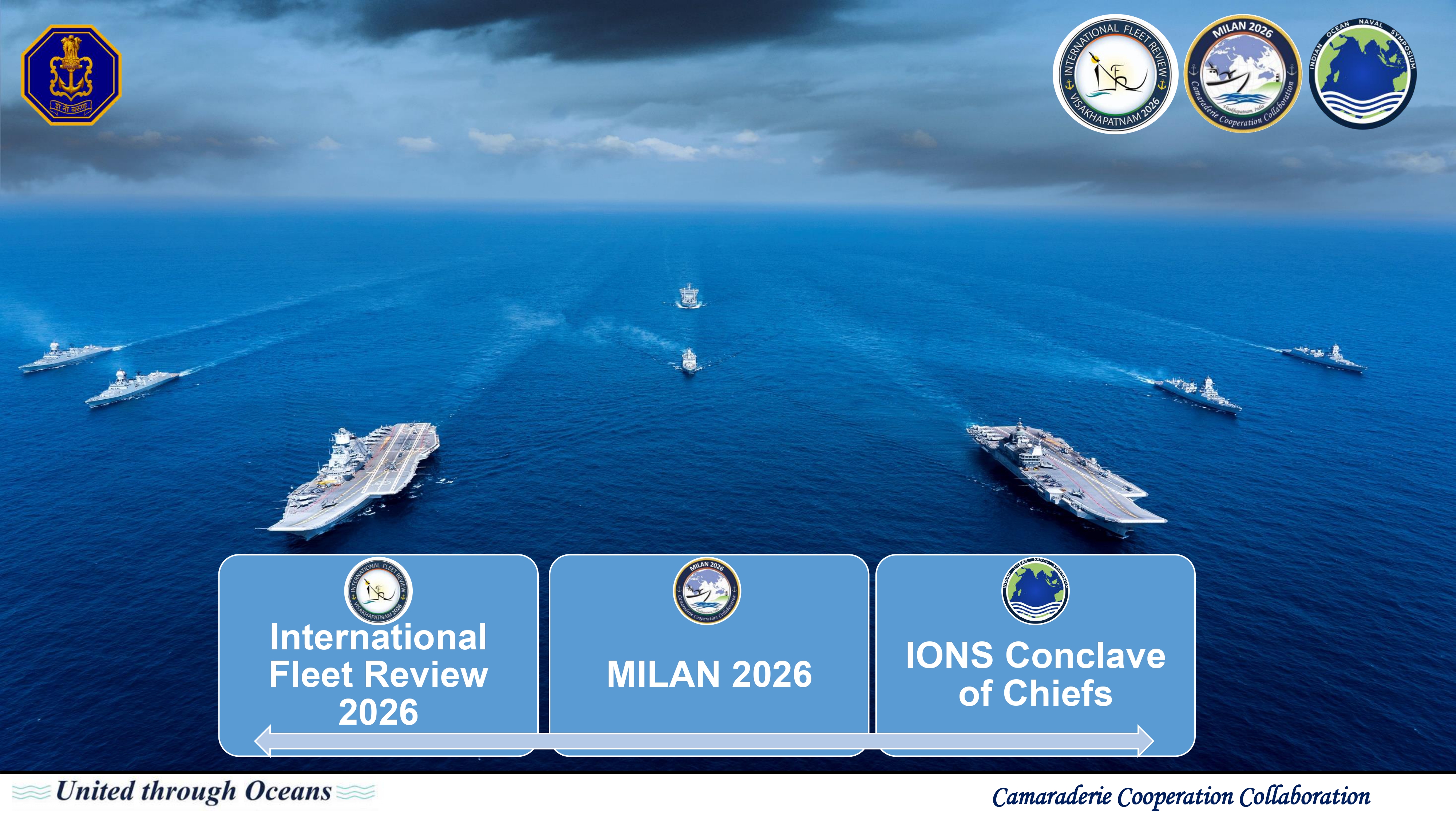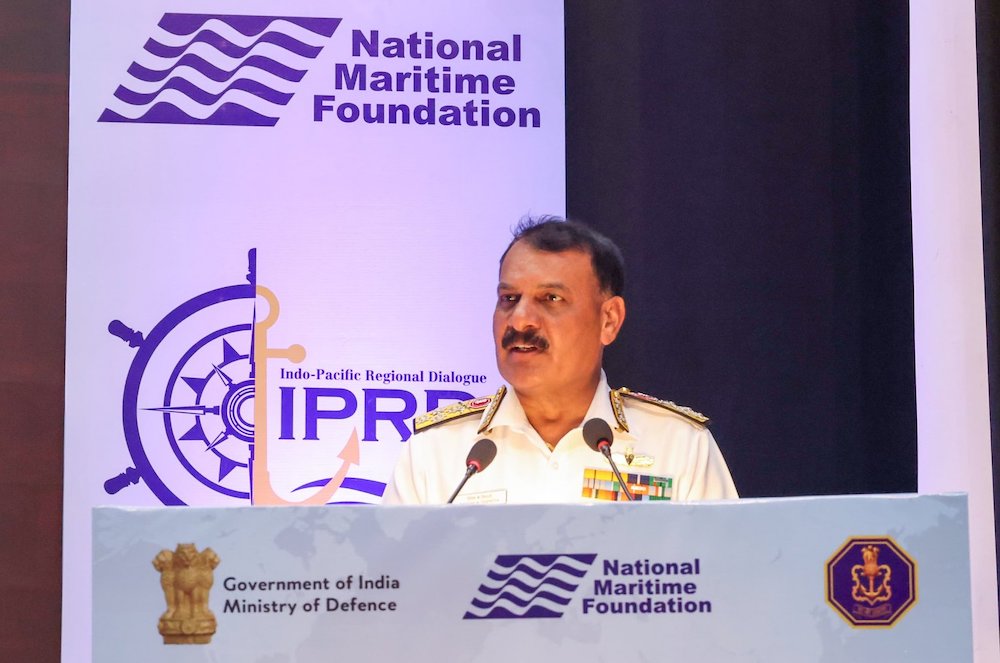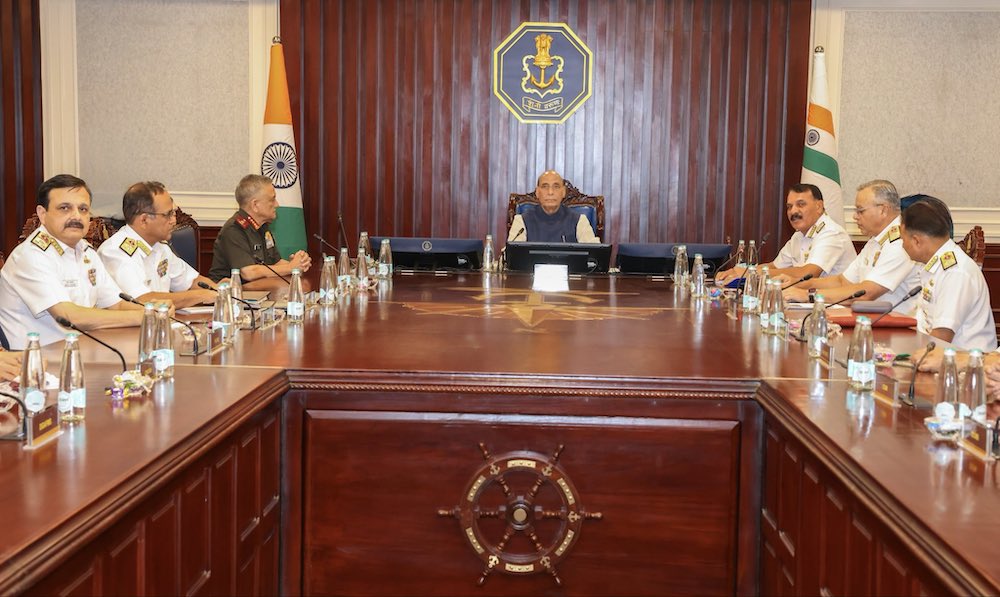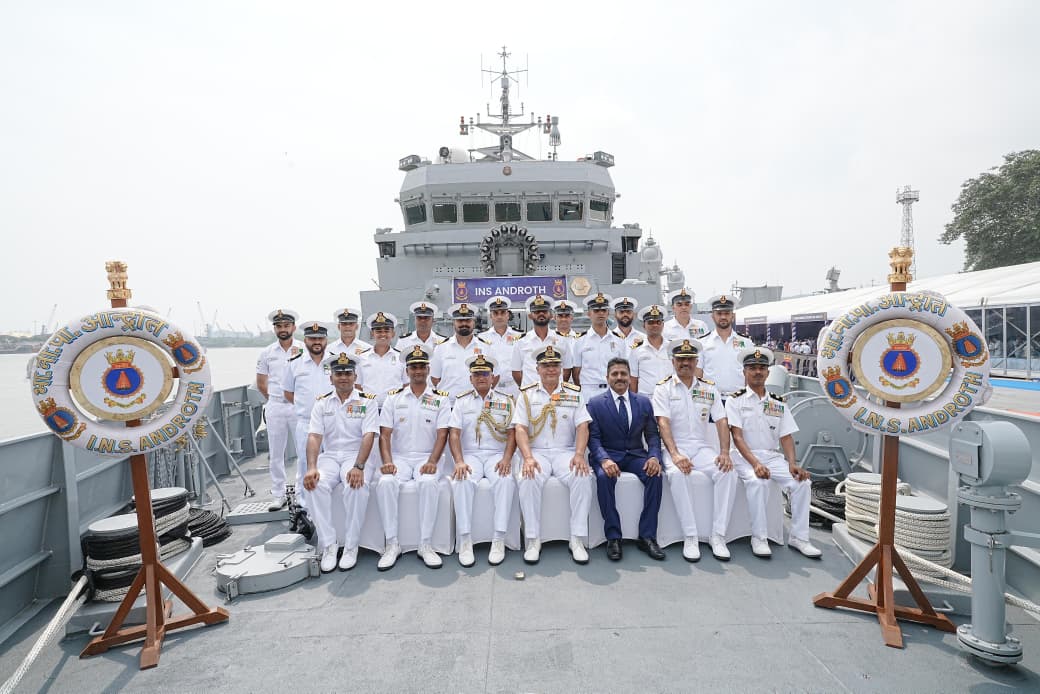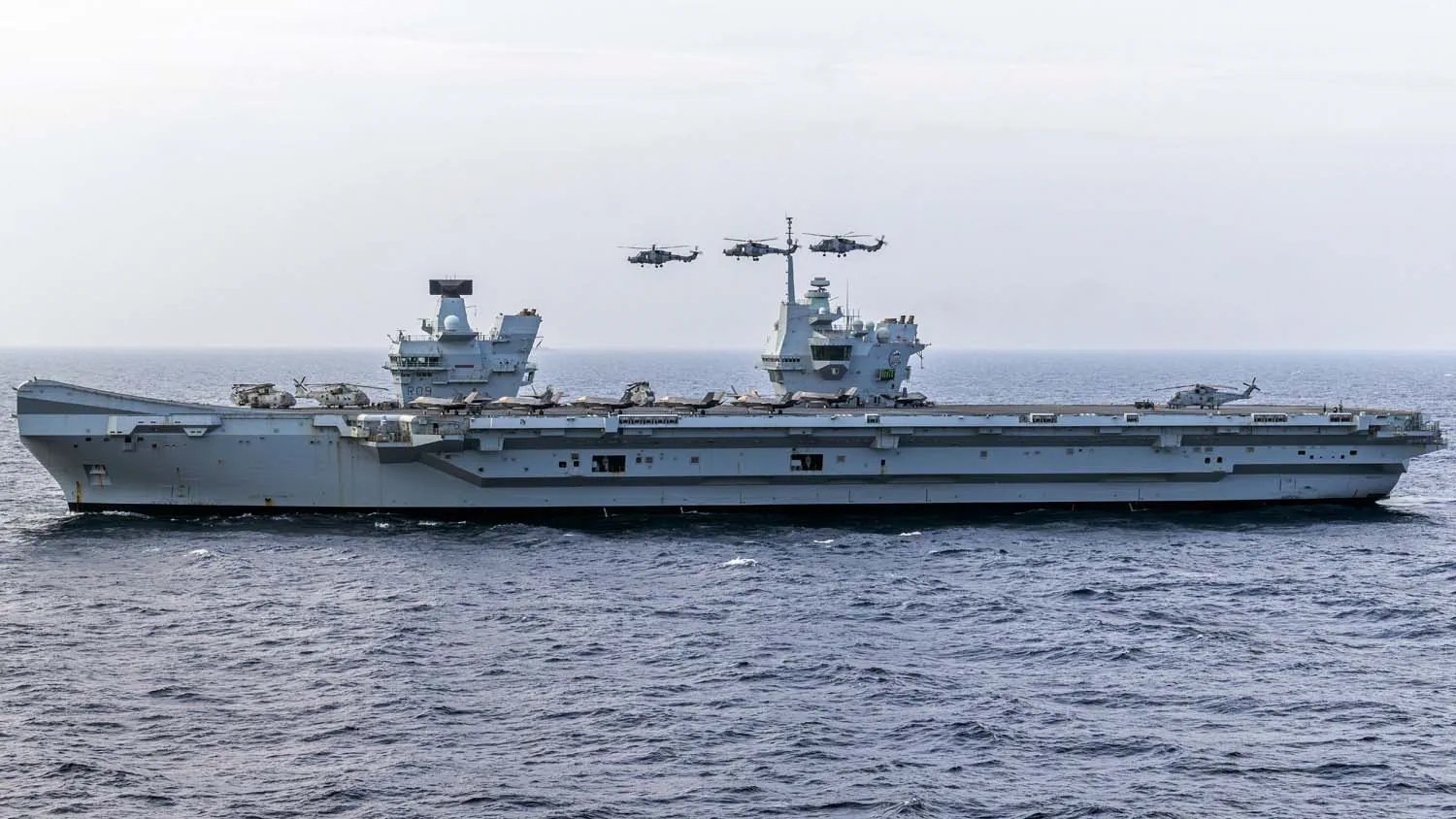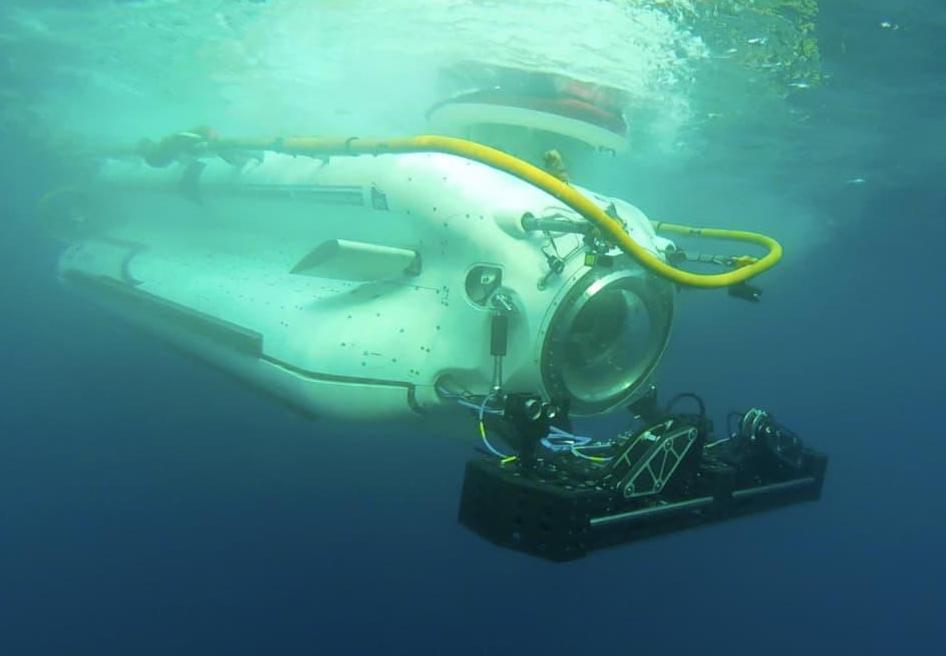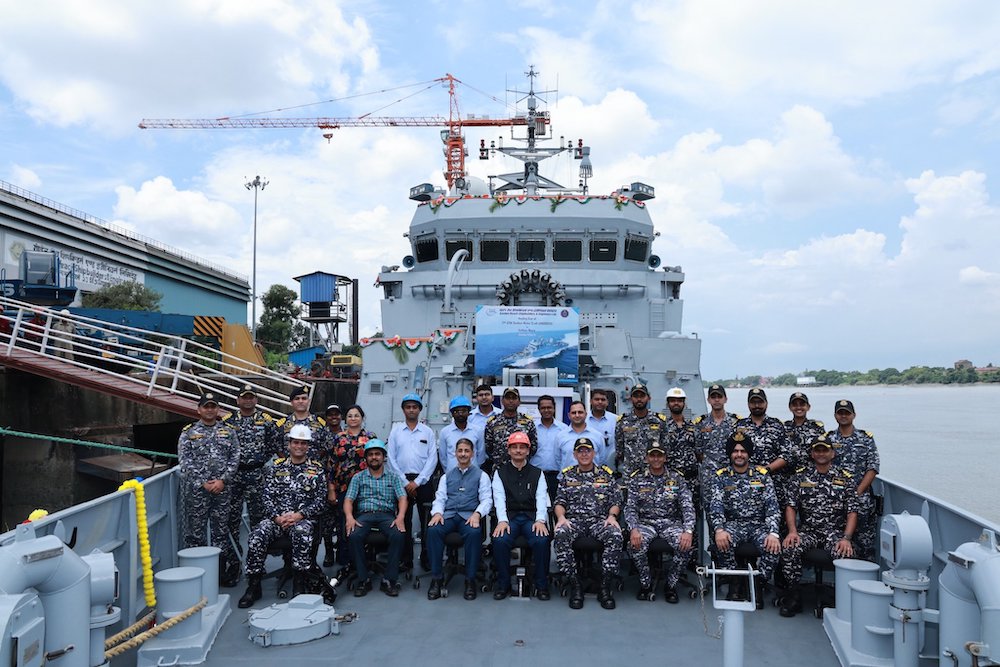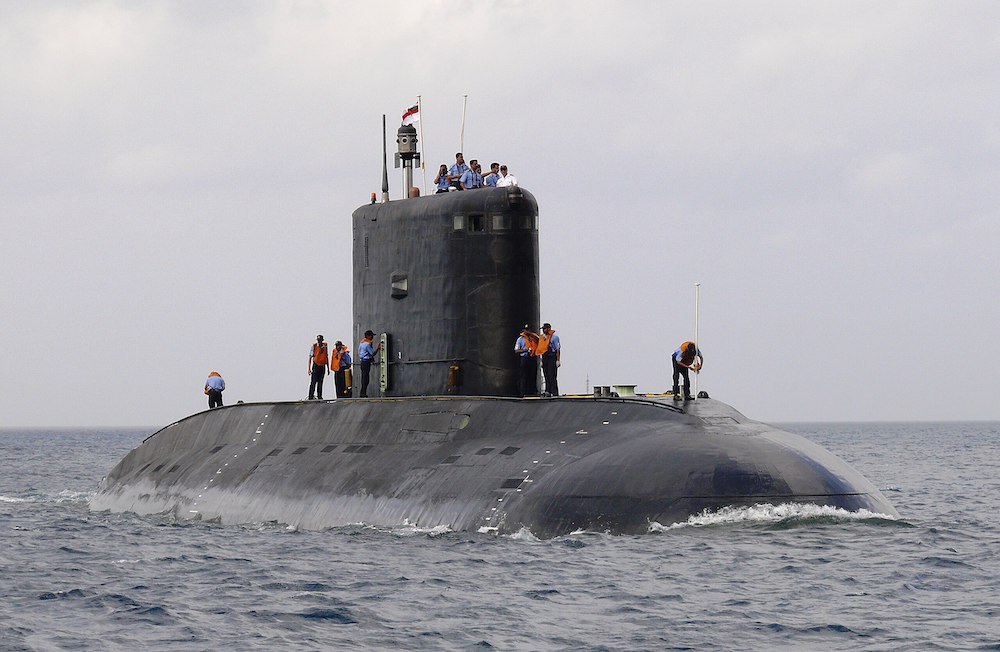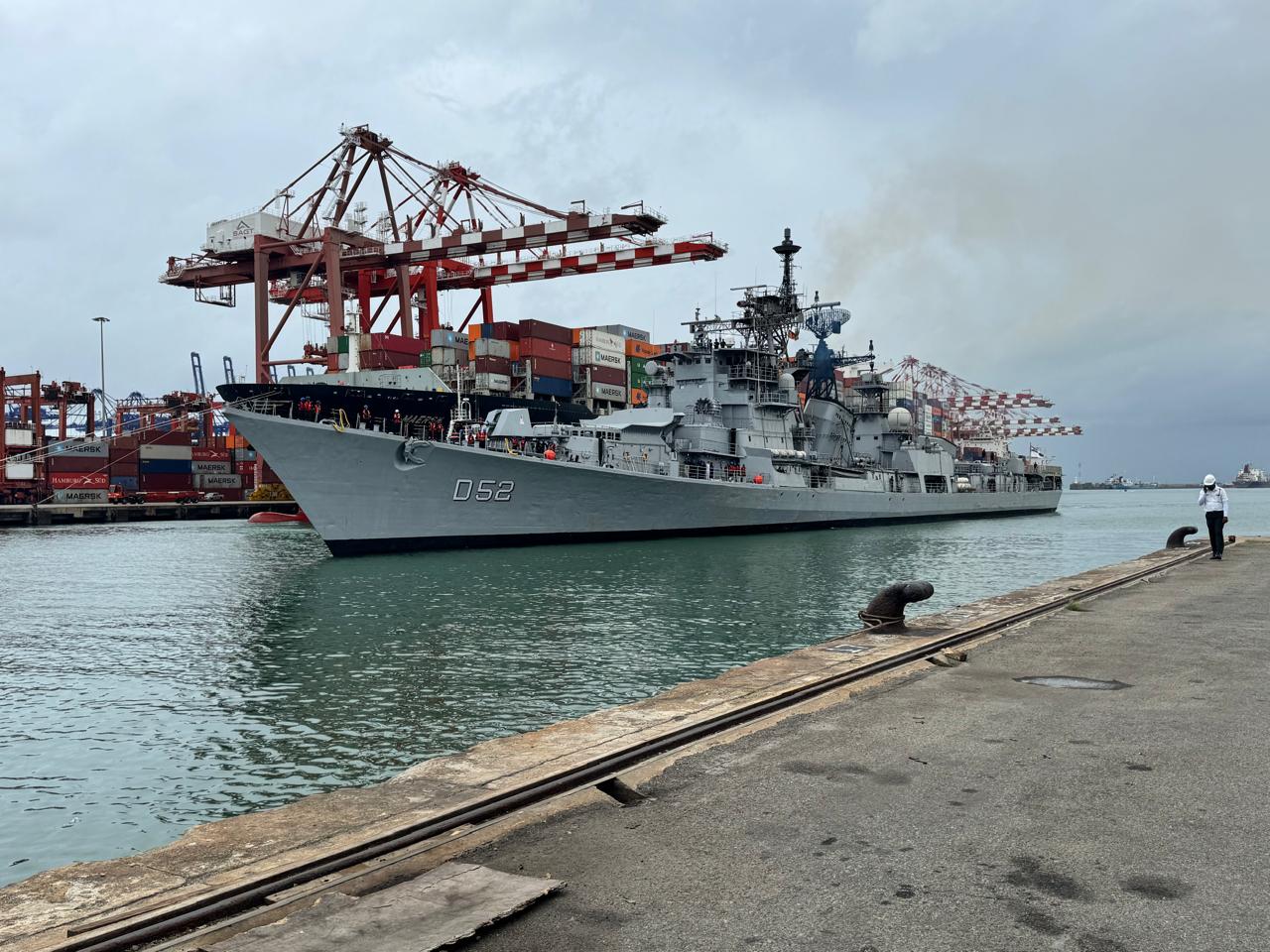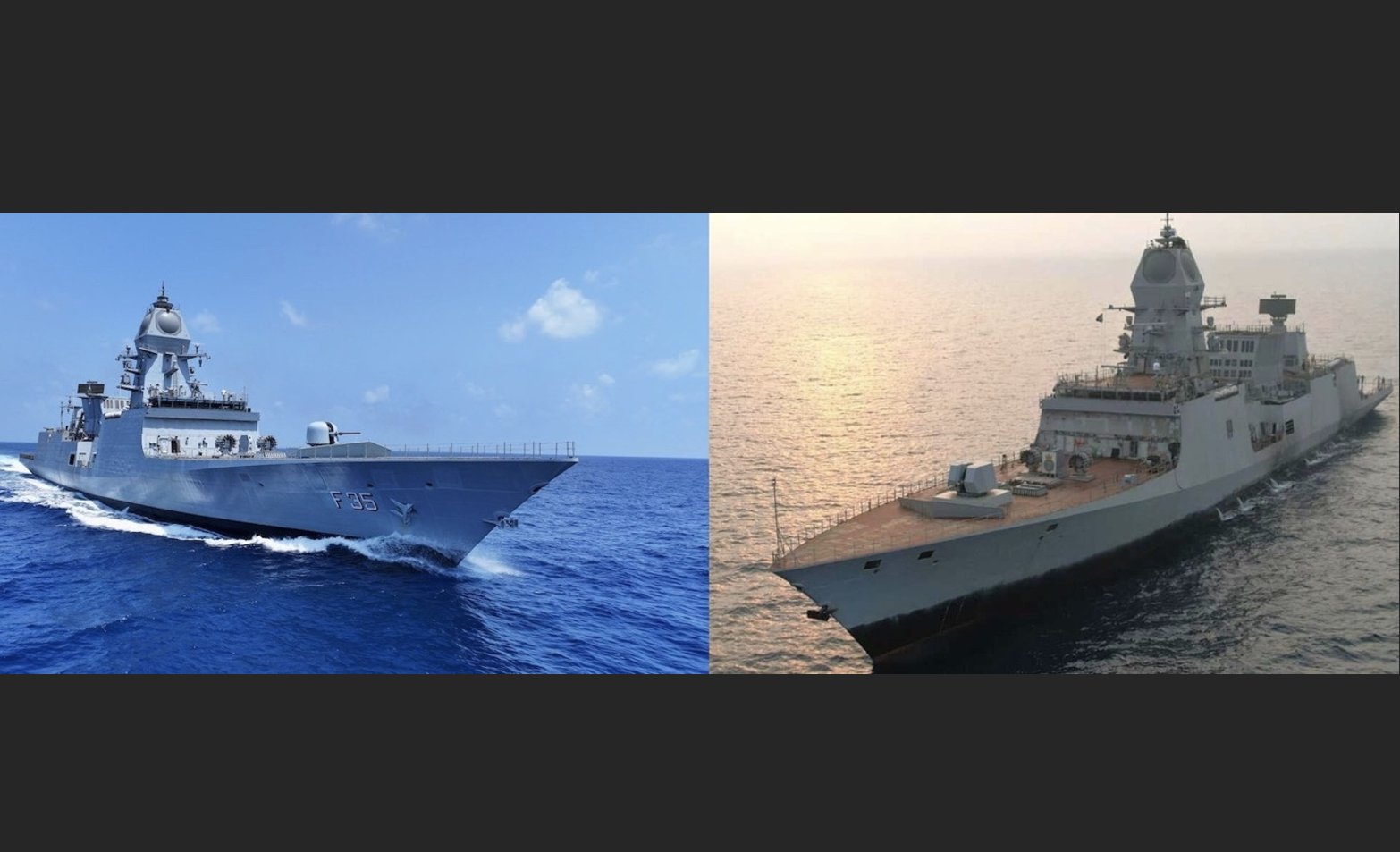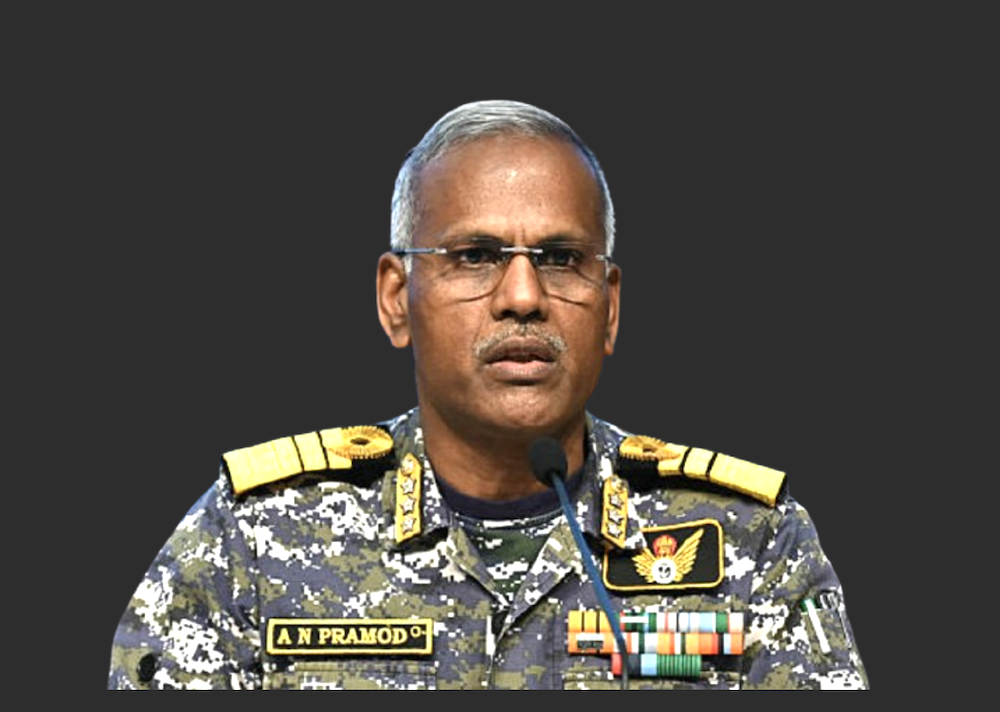 Vice Admiral AN Pramod, DGNO, Indian Navy.
Vice Admiral AN Pramod, DGNO, Indian Navy.
In the shadow of escalating India-Pakistan tensions during Operation Sindoor, a singular voice cut through the diplomatic noise with steel-edged clarity: “Pakistan knows very well what would happen if they attacked India.” The words, delivered with steely conviction by Vice Admiral AN Pramod during his first media conference as tensions reached fever pitch, didn’t merely echo across newsrooms – they thundered through diplomatic corridors and military command centres on both sides of the border.
As the current director general of naval operations (DGNO) and mastermind behind Indian Navy’s manoeuvres during Operation Sindoor, VAdm Pramod transformed the nation’s maritime force into a formidable chess piece on the geopolitical board. His calculated aggression and strategic brilliance didn’t just deter potential escalation – it rewrote the rules of maritime engagement in the region, cementing his reputation as perhaps the most visionary naval strategist of his generation, whose tactical genius has become the silent sentinel protecting India’s vast maritime frontiers.
Face of Naval Deterrence
As the DGNO, Vice Admiral AN Pramod has been instrumental in orchestrating India’s naval response during the recent confrontation with Pakistan. Operation Sindoor, launched in the intervening night of May 6 and 7 as part of India’s controlled military response to the Pahalgam terror attack, saw Vice Admiral Pramod emerge as the Indian Navy’s public face during this critical period.
His first news conference, along with DGMO Lieutenant General Rajiv Ghai from the Indian Army and DGAO Air Marshal Awadhesh Kumar Bharti from the Indian Air Force, during the heightened tensions became particularly noteworthy when responding to questions about potential Pakistani aggression. “Pakistan knows very well what would happen if they attacked India,” he stated firmly – a response that garnered significant attention across diplomatic and defence circles. This resolute stance reflected the Indian Navy’s preparedness under his direction during a period of increased regional volatility.
Behind the scenes, VAdm Pramod’s operational brilliance came to the fore as he coordinated the Navy’s strategic positioning across critical maritime zones. As the architect of India’s assertive naval posture during Operation Sindoor, he ensured that naval assets were optimally deployed to project power while maintaining defensive readiness against potential escalations. His experience in communication and electronic warfare proved particularly valuable in maintaining India’s information superiority throughout the operation.
Strategic Maritime Coordination
Under Vice Admiral Pramod’s guidance, the Navy maintained an aggressive yet calculated presence in the Arabian Sea, effectively implementing a deterrence strategy while supporting the broader objectives of Operation Sindoor. His previous experience as fleet operations officer of the Western Fleet – the “sword arm” of the Indian Navy – provided him with the tactical understanding necessary to execute complex maritime manoeuvres during this sensitive period.
The operation showcased his ability to integrate naval aviation, surface vessels, and submarine assets into a cohesive force projection strategy. Intelligence reports suggest that the naval blockade options prepared under his direction were instrumental in applying diplomatic pressure during negotiations, which demonstrated the critical role of maritime power in modern conflicts.
From Thrissur’s St Paul’s School to Naval HQ
Vice Admiral AN Pramod’s journey to naval leadership began far from the sea in the heartland of Kerala. Born in 1969 in Raipur, now the capital of Chhattisgarh, where his father was stationed for work, his Kerala connections run deep through his family heritage. On June 3, 1974, he was enrolled as admission number 1176 in the first grade at Saint Paul’s School in Kuriyachira – a municipal ward in Kerala’s Thrissur, a fact that remains a source of pride for the institution today.
His early life was marked by personal challenges. His mother, Chitra, who had enrolled him in the school in Thrissur, passed away due to heart-related complications while he was still young. The loss came at a formative stage in his development but appears to have instilled in him the resilience that would later define his naval career.
His father, AG Natarajan, was a civil engineer whose work took the family across different parts of India. As the younger of two sons in the family, Pramod’s early years were shaped by these movements, exposing him to diverse cultural environments across the country. This peripatetic childhood likely contributed to the adaptability and cosmopolitan outlook that would serve him well in his future naval career spanning multiple commands and postings.
From Military School to Naval Academy
Following his mother’s passing, young Pramod’s education took him away from Kerala. After obtaining his transfer certificate from St Paul’s, he continued his education at Carmel School in Gwalior. The formative years of his secondary education, from eighth through Class XII, were spent at Dholpur Military School in Rajasthan, where the disciplined environment likely shaped his future military career.
His academic journey culminated with his selection to the prestigious 38th Integrated Cadet Course at the Naval Academy in Goa. This marked the beginning of his formal naval training, setting him on the path to a distinguished career in the Indian Navy. His performance during training foreshadowed his future excellence – he received the flag officer commanding in chief’s Eastern Naval Command Rolling Trophy for standing first in flying training and ground subjects, as well as the Uttar Pradesh trophy for coming first in the Overall Order of Merit.
His commitment to continuous professional education remained evident throughout his career. He later completed the Staff Course at Defence Services Staff College (DSSC) in Wellington, Tamil Nadu, and the Naval Higher Command Course at the Naval War College in Goa. These prestigious courses further honed his strategic thinking and prepared him for higher command responsibilities.
Three Decades of Distinguished Service
Vice Admiral AN Pramod’s naval career began on July 1, 1990, when he was commissioned into the Indian Navy. Early in his career, he specialized in two critical areas that would define much of his professional journey – communication and electronic warfare, alongside qualification as a naval air operations officer.
A particularly significant achievement was his qualification as a “Category A” observer on the Sea King helicopter platform. This specialized aviation role combined with his expertise in electronic warfare provided him with unique perspectives on maritime operations, particularly in anti-submarine warfare (ASW) and maritime surveillance – capabilities that would later prove valuable during tense operational periods.
His early sea appointments included serving as the gunnery officer II (GO II) of INS Kirpan, a Khukri-class corvette, and as the signal communications officer (SCO) of INS Sujata, a Sukanya-class patrol vessel. These initial assignments provided him with hands-on experience in naval operations and communications systems that would form the foundation for his later command roles.
Command Responsibilities and Staff Appointments
Vice Admiral AN Pramod’s career features an impressive progression of increasingly important command responsibilities. He commanded three significant naval vessels: INS Abhay (the lead ship of her class of anti-submarine warfare corvettes), INS Shardul (the lead ship of her class of amphibious warfare vessels), and INS Satpura (a Shivalik-class stealth multi-role frigate). He also served as the executive officer of INS Rajput, the lead ship of her class of guided missile destroyers.
His shore-based command experience includes leading the Naval Air Station Utkrosh at Port Blair, strengthening India’s maritime presence in the strategically important Andaman and Nicobar Islands. Later, as flag officer commanding of Maharashtra Naval Area, he oversaw naval operations across a critical maritime region that includes Mumbai – India’s principal naval base on the western seaboard.
Between sea commands, Vice Admiral Pramod held several significant staff appointments that broadened his expertise in naval planning and operations. He served as joint director of naval air staff and joint director of aircraft acquisition at the Naval Headquarters – positions that deepened his understanding of naval aviation capabilities and acquisition processes. His experience also includes serving as a directing staff at the Defence Services Staff College in Wellington, where he helped shape the next generation of military leaders.
His membership in the Indian Strategic & Operational Council (INSOC) from 2016–19 and the Tactical Audit Group (TAG) from 2006–09 placed him at the centre of developing naval doctrine and operational concepts. These appointments reflect his growing influence on strategic thinking within the Indian Navy.
Rise to Flag Rank and Current Leadership
Vice Admiral Pramod’s ascension to flag rank marked the beginning of his most influential period of service. As deputy commandant and chief instructor of the Indian Naval Academy, he played a crucial role in shaping the training and education of future naval officers, influencing the ethos and capabilities of the next generation of naval leadership.
His appointment as assistant chief of naval staff (air) at the Naval Headquarters placed him in a key position overseeing the development and operations of naval aviation assets – a critical component of India’s maritime power projection capabilities. This role built upon his earlier expertise as a naval aviator and observer, allowing him to shape strategic decisions regarding the Navy’s air arm.
On January 15, 2024, Vice Admiral Pramod assumed the role of director general naval operations, which placed him at the nerve centre of the Indian Navy’s operational planning and execution. This appointment came at a critical juncture, as regional maritime challenges continued to evolve and India’s strategic interests in the Indo-Pacific region expanded. Within months of taking this position, his leadership would be tested during Operation Sindoor.
Recognition and Achievements
Vice Admiral Pramod’s exceptional service has been recognized through prestigious decorations that highlight both his operational excellence and strategic leadership. He has been awarded the Ati Vishisht Seva Medal (AVSM) for distinguished service of an exceptional order, reflecting his sustained contributions to the Indian Navy at the highest levels.
He has also received the Nao Sena Medal for devotion to duty and outstanding leadership during critical operations, particularly during periods of heightened military tension. These decorations stand as testament to his dedication to national security and operational excellence.
Throughout his career, Vice Admiral Pramod has been recognized for his ability to blend technical expertise with strategic vision. His background in communication and electronic warfare has informed his approach to modern naval operations, particularly as maritime domains become increasingly contested spaces for information warfare and electronic combat.
Personal Life
Despite his demanding career, Vice Admiral Pramod has maintained strong family connections. He is married to Ambili Pramod, who has supported his naval career through numerous postings and responsibilities. Together, they have two children, Chitranjali and Siddhanta, who have grown up within the unique environment of a naval family.
The family’s Kerala connections remain strong despite VAdm Pramod’s postings across India. His elder brother, AN Vinod, serves as general manager of treasury and international business at the South Indian Bank in Mumbai.
The loss of both his parents – his mother during his childhood and his father in January 1999 – represents personal challenges he has faced while building his naval career. These experiences may have contributed to the resilience and determination that characterize his leadership style.
Legacy of Maritime Leadership
As Vice Admiral AN Pramod continues in his role as director general naval operations, his influence on India’s maritime strategy during a critical period in the nation’s security environment establishes him as a significant figure in the Indian Navy’s leadership pantheon. His combination of operational experience, strategic understanding, and decisive leadership has proven particularly valuable during periods of regional tension.
His Kerala origins, combined with his national service, reflect the diverse backgrounds that contribute to India’s defence leadership. From a schoolboy at St Paul’s School to directing naval operations during heightened tensions with Pakistan, Vice Admiral Pramod’s journey embodies the professional excellence and dedication characteristic of India’s senior military leadership.
As maritime challenges in the Indo-Pacific region continue to evolve, Vice Admiral AN Pramod’s expertise in naval operations, communication systems, and strategic planning positions him as a key architect of India’s maritime response to emerging threats and opportunities. His career trajectory and current leadership role make him one of the most significant naval officers in contemporary Indian defence circles, with his decisions during Operation Sindoor likely to be studied by future generations of naval strategists.
